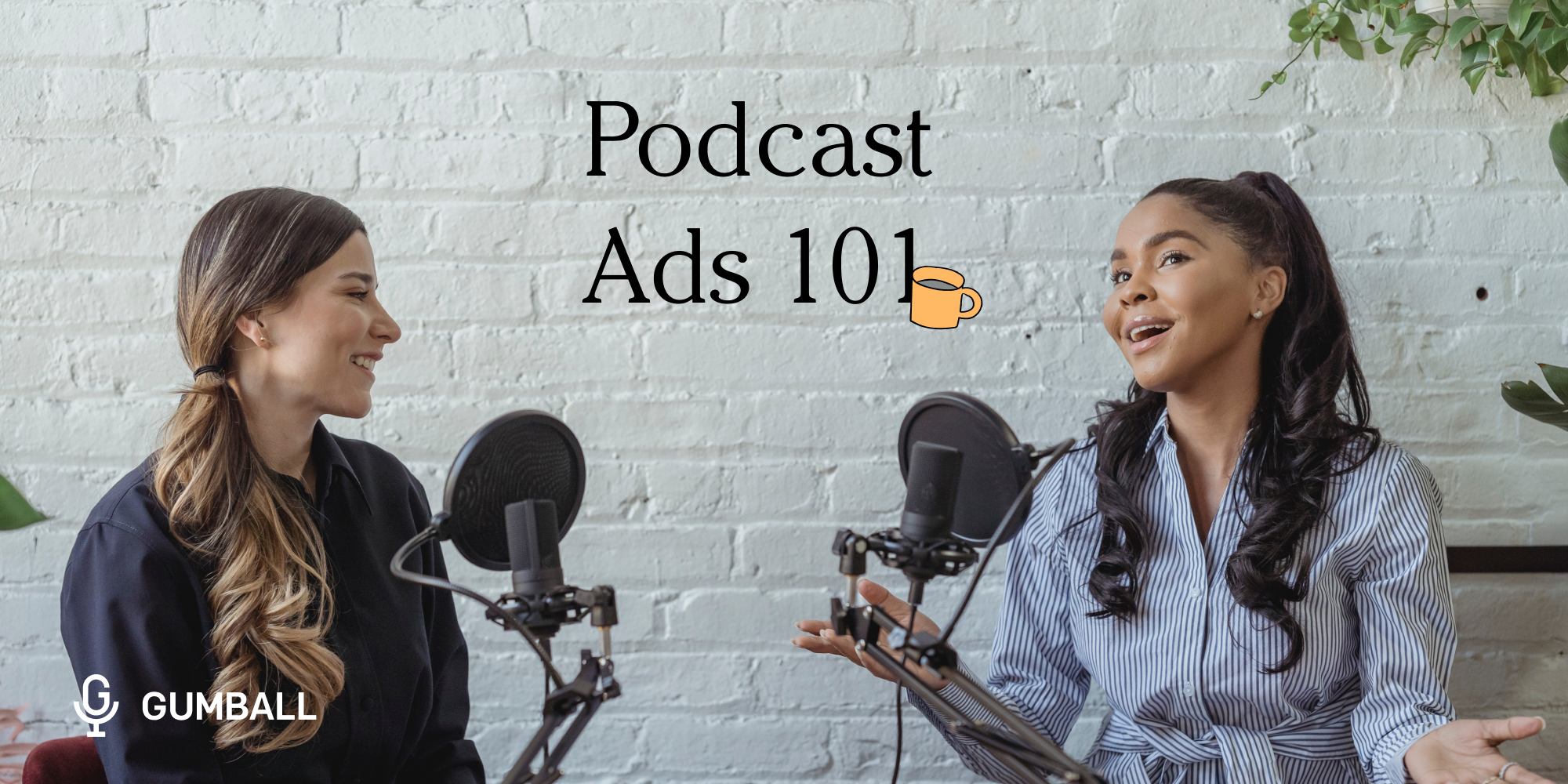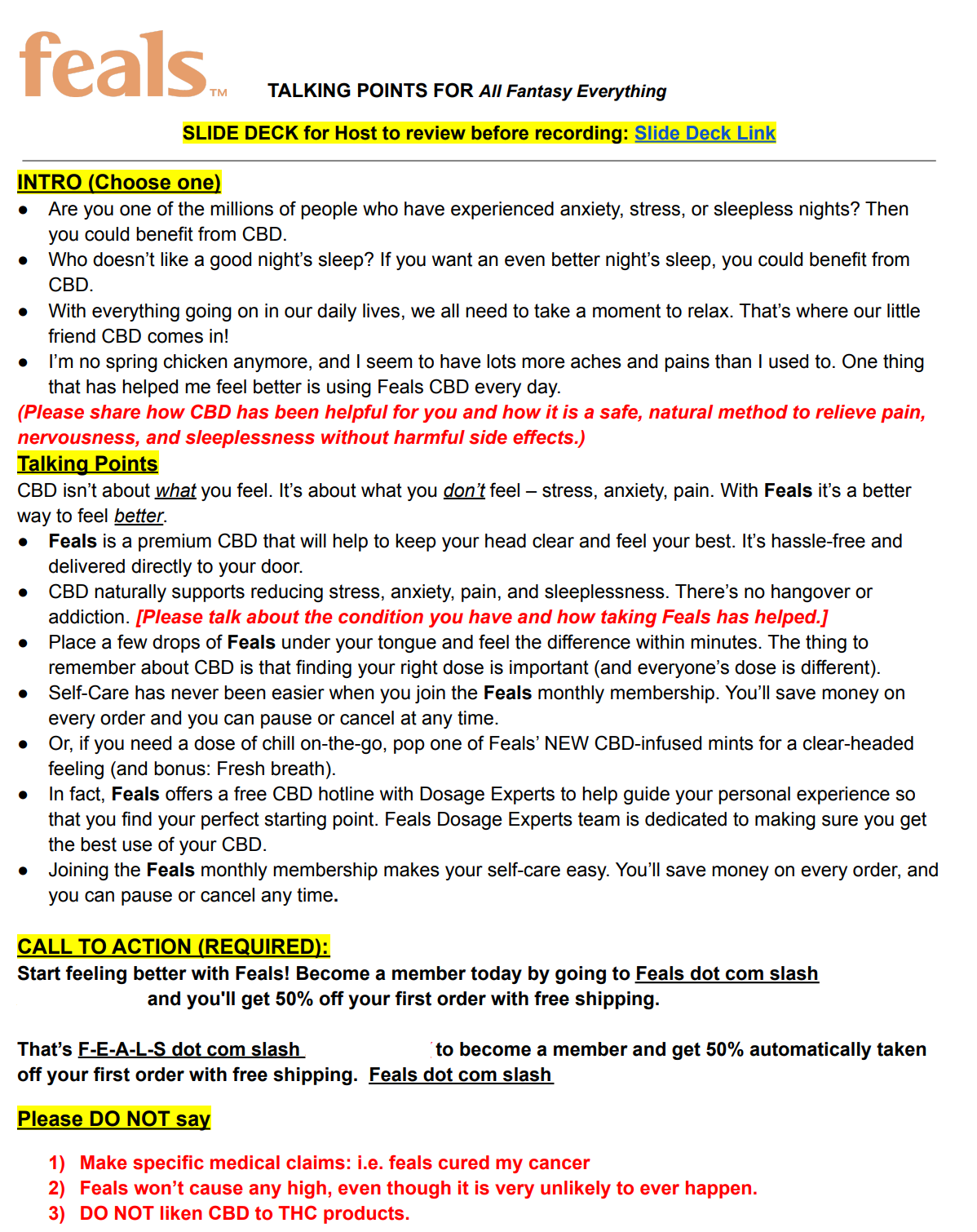Podcast Ads 101: How to Design a Great Host-Read Ad as an Advertiser
Learn what podcast hosts want to see in ad copy scripts and how to make your brand’s host-read ads stand out.

Gumball celebrates the mighty host-read ad for its ability to connect with listeners like no other type of podcast ad. If you’re a brand looking to advertise on podcasts, you probably already know why host-read ads are so effective. But you might not be sure of how exactly to write a good host-read ad script.
Though they’re technically called “scripts,” an important note is that the best host-read ads don’t sound like the host is reading off lines in corporate marketing speak or word-for-word exactly as they’re written. Instead, they sound natural and authentic, and they’re read in the host’s own voice and style.
There’s a lot of debate in the podcast world about what types of ads are better, but what it really comes down to is “the creative execution of the advertisement, not the form of delivery,” our friends at Sounds Profitable remind us.
That’s why instead of a formal script, our Ad Operations Managers Michelle and Gionna recommend putting together a set of talking points that guides the host and gives them the freedom to freestyle, inject their own personality, and share any personal anecdotes related to your brand. This helps ensure the ad is creative, engaging, and memorable.
In addition, “focus on the one big takeaway or ‘hero statement’ a listener should not forget,” says Adam McNeil, VP of Marketing at podcast advertising agency Adopter Media. “It should be broad, jargon-free, memorable, short, inspiring, and about the customer (they're the hero, not you).”
Here, we've compiled some best practices for designing host-read ad copy, based on real ad copy that has driven the most success for our sponsors. We also include examples, do’s, and don’ts.
Consider the following format for a 1-minute ad:
Intro:
This is a one or two sentence intro about your product or brand. Explain what your product is and maybe how or why it came to be.
Example: (Optional: If you have any, feel free to start your read with a personal anecdote about the pains of buying indoor house plants.) Green Thumb is focused on one thing and one thing only: offering beautiful and unique house plants with convenient home delivery.
Do: Identify the problem that your product solves.
Don’t: Share excessive detail unrelated to your core product and problem.
Talking Points:
These are 4-5 bullet points that the hosts can touch upon in their read. They may include product features and benefits or how to use your product or brand.
- We recommend writing 4-5 talking points but only requiring the hosts to read 1-3. This gives them some options for what they want to focus on and allows them to rotate through different talking points if they are doing multiple ads for your brand.
- If any points are mandatory to read, be sure to emphasize that clearly in your script. We often see people highlight mandatory copy points in red with a note at the top of the copy about this (i.e. “red text must be read verbatim”).
- Make these talking points as clear and concise as possible. This will allow for the hosts to put these talking points in their own voice and help the ad resonate with their audience.
Example:
- Green Thumb sells a variety of plants, including easy-care, pet-friendly, and giftable options, for all kinds of plant lovers.
- All plants ship for free and arrive in 3-5 business days, guaranteed.
- No more lugging big plants on the subway or figuring out how to ship a plant gift to a loved one.
- Green Thumb’s best sellers include the fiddle leaf fig, string of pearls, and spider plant.
- Green Thumb’s plants are affordable and start at just $15. Nothing costs over $100.
Do: Keep it factual, short, and sweet.
Don’t: Use flowery or inaccessible language.
Personal Experience:
If your ad read requires a personal endorsement, give instructions on what the hosts should talk about here.
- Question prompts are particularly helpful.
Example:
- What did you think of the packaging? Did your plant arrive safely?
- What plant was your favorite? How did you decide which plant to order?
- Where did you place your plant? How does it fit into your interior style?
Do: Make sure to send product samples well in advance so the host has time to try and get to know your product and brand. Keep your question prompts open-ended.
Don’t: Try to put words in the host’s mouth. You should guide them towards their personal opinion and answer, but don’t force them to say a specific opinion.
CTA:
This is your Call to Action where you direct listeners to an offer and your brand’s website.
- This should include any vanity URLs or promo codes created for the ads.
- Reminder: Each show's preferred promo code can be found on the Edit Script page.
- We recommend emphasizing that the CTA must be read verbatim and require promo codes and URLs to be read twice for clarity.
Example: Start developing your Green Thumb today. Go to Green Thumb dot com and use promo code NEWCOMERS for 20% off your first plant purchase. That’s code NEWCOMERS at Green Thumb dot com.
Do: Repeat the offer details and spell out any long or potentially confusing words and codes.
Don’t: Make up your own promo code. Shows usually have a preferred promo code format.
With this format in hand, you’ll be able to write host-read ad scripts that are easy for the host to work with and help you deliver your brand’s message.
Check out this real example from the brand Feals, where you can see how they delineate the intro, talking points, CTA, and required copy:

This is how the final read based off the talking points turned out:

To summarize…
The Gumball Recipe for Impactful Host-Read Ad Copy:
- Think talking points and guidelines, not a strict script.
- Clarity and concise language are key. No need to wax poetic or add jokes — that’s the host’s job.
- Emphasize which copy points are mandatory to read by writing them in red or highlighting them.
- Give enough talking points to the host so they can rotate through points if they’re doing multiple ad reads for your brand.
- Encourage a personal endorsement if it fits your brand.
- Don’t forget the CTA! Double check all offer details including the website spelling, promo code, and discount.
Need help writing a script? We’re happy to help and look over your ad copy. Reach out to us at help@gumball.fm.
Get started on your next host-read ad campaign with Gumball.
